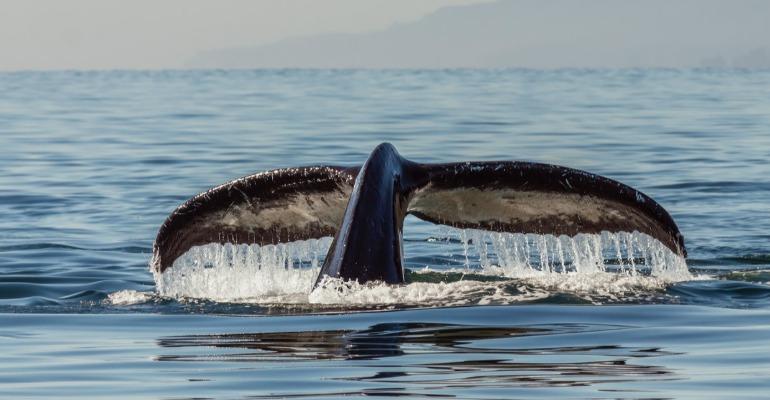No-take zone
The MPZ bans fishing and all other extractive activities within its area of coverage; with no-take zones comprising 1% of all MPZs internationally, Tristan da Cunha’s is the most stringent of its kind. It represents the largest of its type in the Atlantic and the fourth biggest no-take zone in the world.
The Tristan da Cunha MPZ will now form part of the Blue Belt – a collection of conservation areas that the UK government plans to extend to over 4 million sq km (1.5 million sq mi) of protected ocean by 2030, amounting to 30% of the world’s oceans.
Ecosystem
Located over 2,700 km (1,600 mi) from South Africa and 3,700 km (2,300 mi) from South America, Tristan da Cunha’s main island is the most remote inhabited landmass on Earth. Populations of elephant seal and fur seal, still recovering from 19th-century hunting, live and breed offshore, in addition to humpback whales, Shepherd’s beaked whales, southern right whales, long-finned pilot whales, sperm whales, blue sharks and species of dolphin.
Tens of millions of seabirds also live on the islands, along with multiple endemic land birds. Of the 25 seabird species that breed there, four are globally threatened and can only be found on the remote group of volcanic islands.
Atlantic petrels, spectacled petrels, Tristan albatrosses, and Atlantic yellow-nosed albatrosses are among the islands’ inhabitants and nearly all of the world’s northern rockhopper penguins have breeding rookeries around the archipelago.
Global effort
Oceanwide Expeditions has commended the breakthrough, writing in a recent blog post, 'This is music to our ears, since our rare Tristan da Cunha trips are filled with wildlife we dearly love but seldom see.'
This milestone was accomplished by collaboration between the government of Tristan da Cunha in partnership with the UK government, Royal Society for the Protection of Birds (RSPB), National Geographic Pristine Seas, Wyss Foundation, British Antarctic Survey, Kaltroco, Blue Nature Alliance, Natural History Museum, Becht Family Charitable Trust, Blue Marine Foundation, Don Quixote II Foundation, and the University of Plymouth.
Copyright © 2024. All rights reserved. Seatrade, a trading name of Informa Markets (UK) Limited.
Add Seatrade Cruise News to your Google News feed.  |

